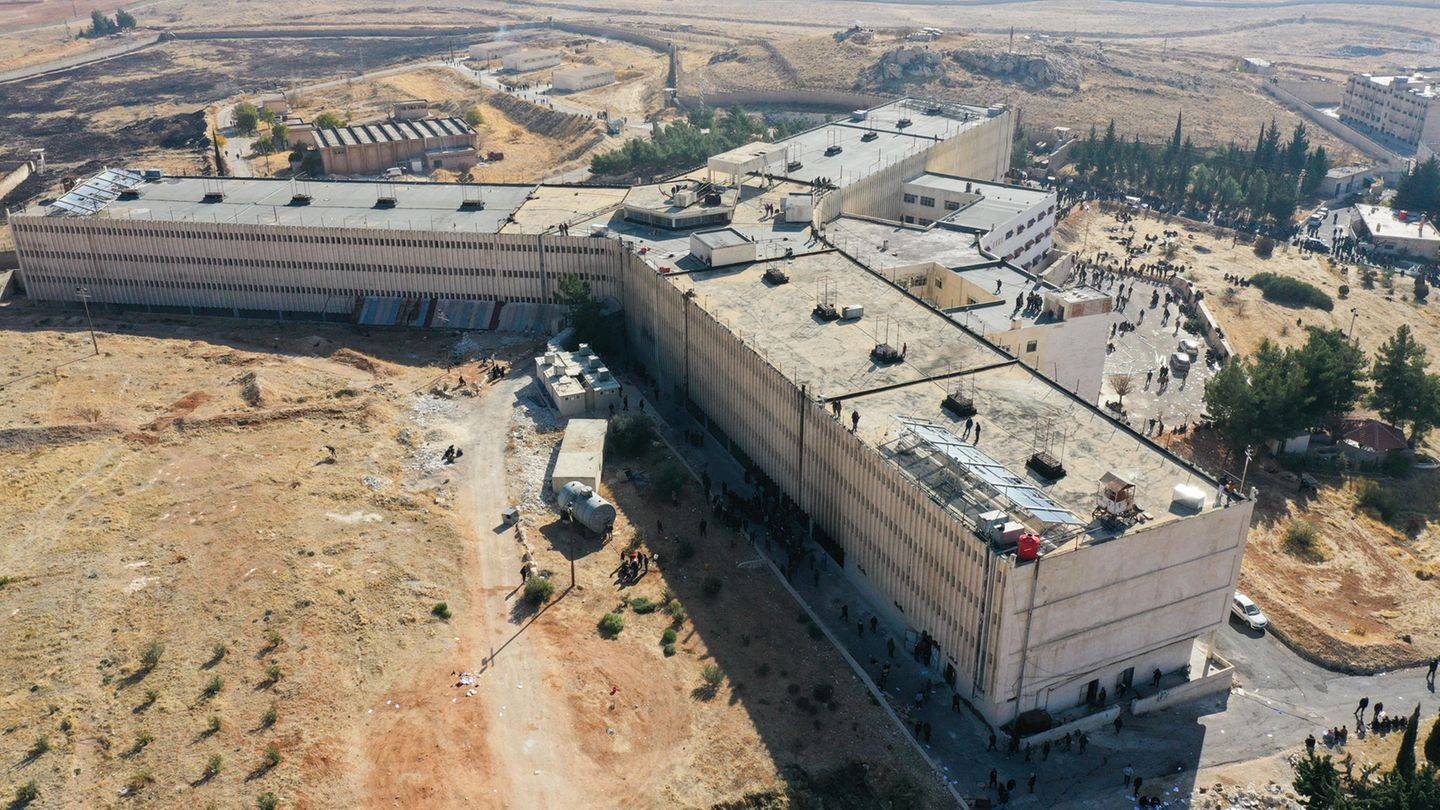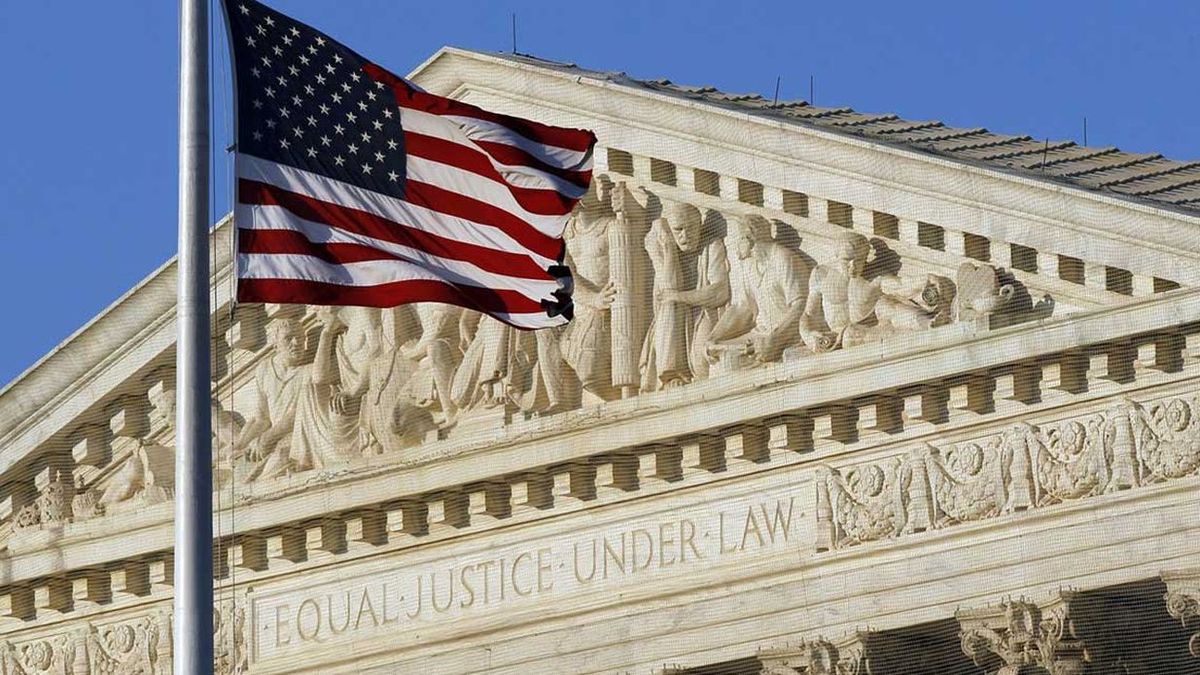Saidnaya Prison
Assad’s “slaughterhouse”: This is where the dictator tortured thousands to death
Copy the current link
In Syria, Saidnaya Prison was called the “slaughterhouse.” Here, dictator Assad had opposition members tortured and executed en masse – two reports provide information.
Syrian rebels have freed thousands of political prisoners from the country’s notorious prisons during their lightning campaign against the Assad regime. One of these detention centers was particularly cruel: Saidnaya, called the “slaughterhouse” by the Syrians. No place in the battered country symbolizes the terror and horror with which ruler Bashar al-Assad oppressed his people more perversely than Saidnaya. Even children and women are said to have sat there.
Immediately after the liberation of numerous prisoners, countless videos appeared on social media showing the interior of the star-shaped building complex. Stained concrete walls, dungeons in the ground, filthy cells, dark corridors and people who can hardly believe their luck at being liberated. A woman who hugs her long-lost son for the first time in 14 years.
Saidnaya means unimaginable levels of barbarism
Thanks to the human rights organization Amnesty International and the organization ADMSP, an association of survivors and family members that documents the crimes, precise descriptions of what happened in the prison now exist. Amnesty International estimates that between 5,000 and 13,000 people were executed or tortured to death in Saidnaya between 2011 and 2015. Most were civilians who criticized the regime or attracted attention in other ways.
There are hardly any concrete figures available for the past nine years. At its peak, 20,000 people are said to have been imprisoned. In another study (survey of 400 former prisoners), the organization ADMSP came to the conclusion that around 2,500 people were incarcerated at the end of 2018. Most of them were young, well-educated men from Sunni families. Torture and executions were commonplace until the liberation. A very large number of those imprisoned did not survive hell.
Mass graves and a crematorium
Saidnaya has always been a military police prison, but with the outbreak of the civil war in 2011 it was increasingly used to lock up masses of opposition figures. Mass executions have been documented, at least for the first few years. The Amnesty report states that initially 20 to 50 prisoners were executed on the gallows two days a week, but later the frequency increased. According to the descriptions of the 65 survivors, which form the basis for the Amnesty report, the execution process was always the same.

First, the victims came before a military tribunal, which handed down a verdict within a few minutes. However, those convicted did not know what punishment they would receive. When the time came (late afternoon), the guards would collect those about to die and take them to a collection cell, where they would give them a final beating. The screams of the condemned should be heard by the other inmates. From there, the victims were transported tied up and blindfolded at night to another building where the execution room was in the basement. Up to this point, prisoners believed that they were simply being transferred to another prison. It was only when they were asked about their final wish that they realized they would be executed. In Saidnaya there are said to have been various mass graves, and at times even a crematorium to burn the countless corpses, as satellite images suggest.
The state of Syria made money from the prisoners
The various torture methods used by Assad’s henchmen in Saidnaya are also documented. Dehydration was one of the most popular methods, and beating was standard. “After they stopped giving us water, we waited in front of the small hatch in the door through which they usually poured the water. (…) We licked the condensation from the walls and ceiling. After nine days, the first, drinking their own urine,” one man said in the Amnesty report. The ADSMP report states that everyone, without exception, was beaten and abused on the penis or anus. Bodies would have been left in cells for days.
If the guards wanted it, the prisoners would have had to eat their meager food rations directly from the dirty floor – or from the toilet. The guards also forced the prisoners to rape each other, to wear wet clothes for days or to walk around naked. Washing, hygiene and medical care were often denied. In addition, the prisoners’ possessions were often confiscated. In winter, the prisoners had to endure the cold in the unheated cells. Diseases and infections were widespread and the cells were often brutally overcrowded.
He captured the Syrian war in pictures and was killed. His last photos

Anas Alkharboutli was born in Damascus and studied engineering there. In 2015 he began working as a photojournalist in the Syrian civil war and from 2017 he worked for the German Press Agency in the Middle East. His parents left Syria. Alkharboutli had ten siblings; one of his five brothers was killed and another was kidnapped
© picture alliance/dpa / Picture Alliance
Back
Further
But that’s not enough. The arrests also served the purpose of profiting from the worries of relatives in the most cynical way. According to the ADSMP report, they had to pay between $500 and $10,000 to obtain information about the fate of those arrested, most of whom had disappeared from the scene without a trace.
Source: Stern
I have been working in the news industry for over 6 years, first as a reporter and now as an editor. I have covered politics extensively, and my work has appeared in major newspapers and online news outlets around the world. In addition to my writing, I also contribute regularly to 24 Hours World.





